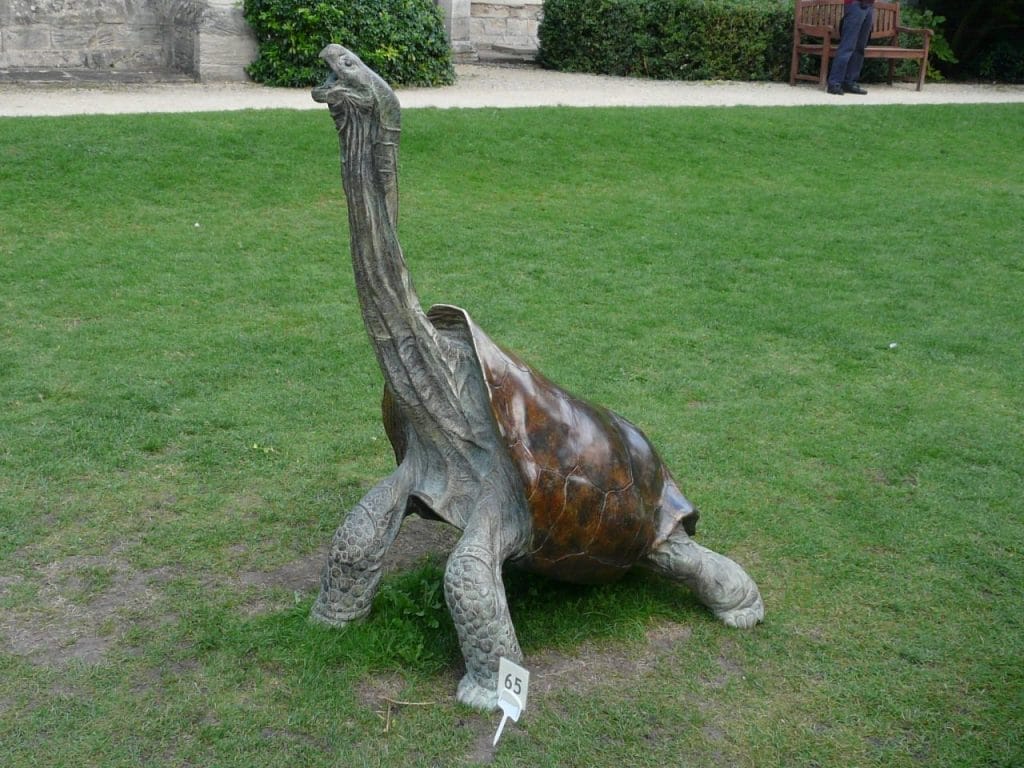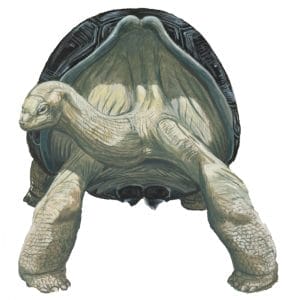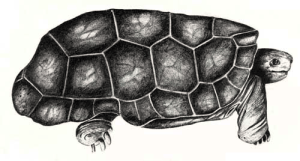Cylindraspis vosmaeri (Saddle-backed Rodrigues Giant Tortoise)
Home > Turtle Database > Cylindraspis vosmaeri (Saddle-backed Rodrigues Giant Tortoise)

Cylindraspis vosmaeri was a species of giant tortoise endemic to Rodrigues Island in the Indian Ocean. Known for its large size and slow-moving nature, it became extinct in the late 18th century due to human exploitation and introduced predators.
Native To These Regions
Rodrigues (Mauritius)Native Turtle Species Map – Find Turtles by Region
Scientific Classification
- Kingdom: Animalia
- Phylum: Chordata
- Class: Reptilia
- Order: Testudines
- Family: Testudinidae
- Genus: Cylindraspis
- Species: C. vosmaeri
Common Names
- Saddle-backed Rodrigues Giant Tortoise
This Hilarious Turtle Book Might Know Your Pet Better Than You Do
Let’s be real—most turtle care guides feel like reading a textbook written by a sleep-deprived zookeeper.
This one’s not that.
Told from the snarky point of view of a grumpy, judgmental turtle, 21 Turtle Truths You’ll Never Read in a Care Guide is packed with sarcasm, sass, and surprisingly useful insights.
And hey—you don’t have to commit to the whole thing just yet.
Grab 2 free truths from the ebook and get a taste of what your turtle really thinks about your setup, your food choices, and that weird plastic palm tree.
It’s funny, it’s honest, and if you’ve ever owned a turtle who glares at you like you’re the problem—you’ll feel seen.
Identification
Description
Cylindraspis vosmaeri had a large, domed shell with a length of up to 50 cm. It had a sturdy, cylindrical body, thick limbs, and a small head relative to its size. Its shell color ranged from light brown to grayish.
Sexual Dimorphism
Males were larger than females and had longer tails, but there were no striking visual differences in shell structure between the sexes.
Check more turtles from the Cylindraspis genus
Native Origin and Distribution
Geographical Range
This species was native to Rodrigues Island, part of the Mascarene Islands in the Indian Ocean.
Preferred Habitat
Cylindraspis vosmaeri preferred lowland forests and scrublands. It was well adapted to the island’s tropical climate, thriving in regions with abundant vegetation.
Behavior
Feeding Habits
As a herbivore, it primarily fed on grasses, leaves, and low-growing vegetation. It played a crucial role in seed dispersal and maintaining the island’s ecosystem.
Predators
The species had no natural predators before humans arrived, but it faced threats from humans and introduced species like rats and cats.
Reproduction
Breeding Season
Little is known about the specific breeding season of this species, but it likely followed similar patterns to other giant tortoises, mating during the warmer months.
Reproductive Method
Cylindraspis vosmaeri was oviparous, with females laying several eggs in shallow nests dug into the ground.
Conservation
Extinction Status
Cylindraspis vosmaeri is extinct, with the last known individuals disappearing in the late 1700s.
Threats
Human exploitation, habitat destruction, and the introduction of non-native predators led to the species’ extinction.
Conservation Measures
Unfortunately, there were no conservation efforts in place at the time to protect this species from extinction.
Economic Importance
The tortoise had no significant economic importance, although early settlers hunted it for food.
Interesting Facts
- Cylindraspis vosmaeri was one of five giant tortoise species native to the Mascarene Islands.
- It played an important ecological role by dispersing seeds and controlling plant growth on Rodrigues Island.

About Author
Muntaseer Rahman started keeping pet turtles back in 2013. He also owns the largest Turtle & Tortoise Facebook community in Bangladesh. These days he is mostly active on Facebook.














